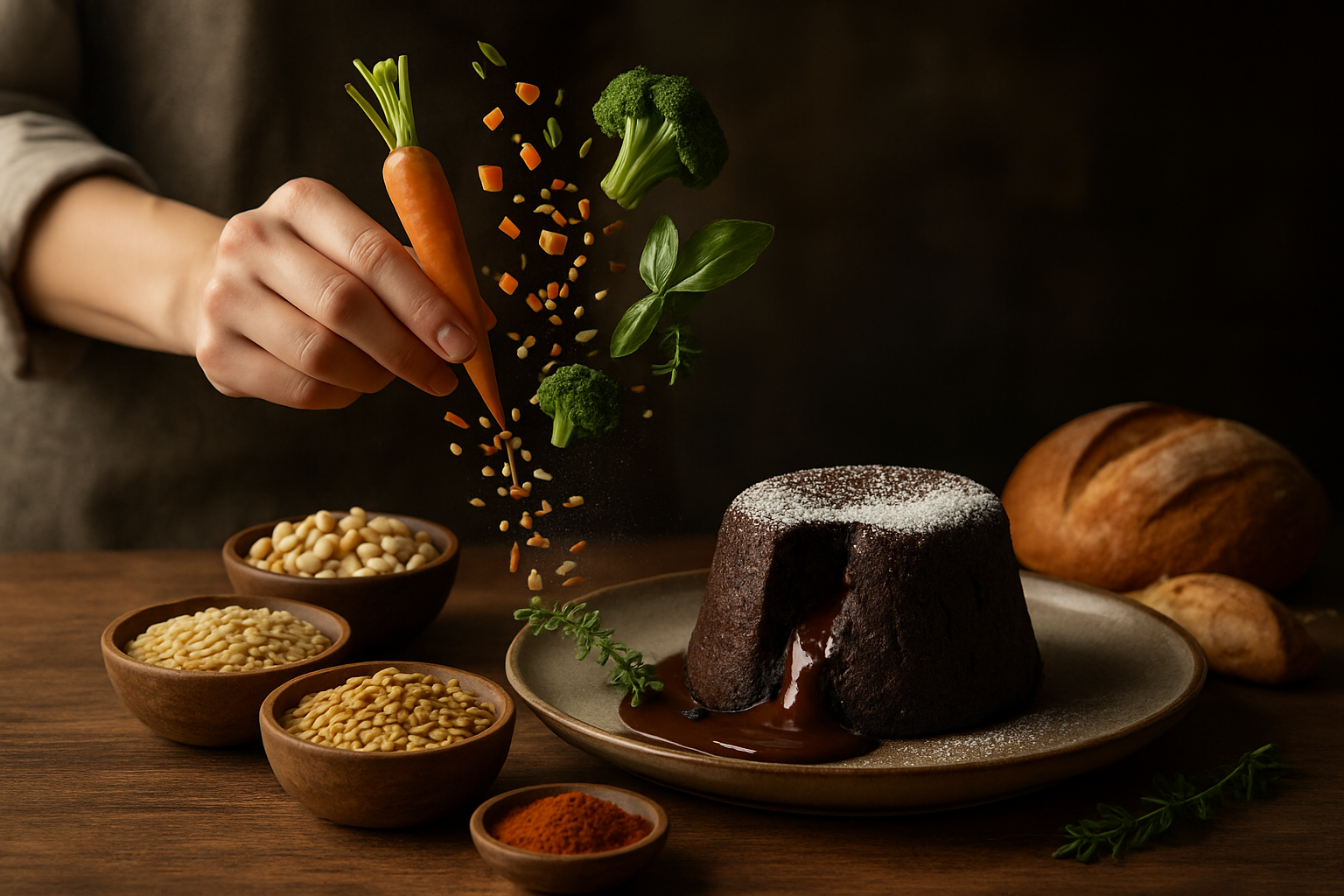Culinary Alchemy: Transforming Everyday Ingredients
Unlock the hidden potential of your pantry staples and elevate your cooking game. From reimagining classic dishes to creating unexpected flavor combinations, this culinary journey will inspire you to see familiar ingredients in a whole new light. Get ready to embark on a tasty adventure that will transform your kitchen into a playground of delicious possibilities.

Humble Beginnings: Transforming Basic Vegetables
Let’s start with the unsung heroes of the kitchen: vegetables. Many home cooks underestimate the potential of common veggies, but with the right techniques, they can become the stars of your meal. Take the humble cauliflower, for instance. When roasted whole and basted with a mixture of spices and olive oil, it transforms into a stunning centerpiece that rivals any roast. Or consider the lowly carrot: when slow-roasted with honey and thyme, it develops a depth of flavor that’s reminiscent of expensive cuts of meat. Even the oft-maligned Brussels sprout can become a delicacy when shredded finely and quickly stir-fried with garlic and pancetta, creating a dish that’s both crispy and tender. The key is to treat these vegetables with the same respect and creativity you would afford to more expensive ingredients. By doing so, you’ll not only create more interesting meals but also reduce food waste and save money in the process.
Grains Reimagined: Beyond the Side Dish
Grains are often relegated to the role of a simple side dish, but they have the potential to be so much more. Take rice, for example. Instead of serving it plain, try toasting it in butter before cooking to create a nutty, complex flavor profile. Or transform it into arancini - crispy, stuffed rice balls that are a favorite in Italian cuisine. Quinoa, often served as a health food, can be turned into delicious veggie burgers or used as a crunchy coating for chicken or fish. Even oats, typically associated with breakfast, can be used to create savory dishes. Try using them as a binder in meatloaf for added texture, or cooking them risotto-style with stock and Parmesan for a creamy, comforting meal. By thinking outside the box, you can elevate these staple grains from supporting players to the main attraction on your plate.
Sweet Surprises: Desserts from Unexpected Sources
When it comes to desserts, creativity knows no bounds. Many ingredients that we typically associate with savory dishes can be transformed into delightful sweet treats. Avocado, for instance, can be blended into a rich, creamy chocolate mousse that’s both indulgent and healthier than traditional versions. Beans, often overlooked in dessert-making, can be the base for fudgy brownies or sweet hummus dips. Even vegetables like beets and zucchini can find their way into cakes, adding moisture and nutrients while reducing the need for excess sugar and fat. The key is to balance flavors and textures. A pinch of salt in your sweet dishes can enhance flavors, while unexpected add-ins like herbs or spices can create intriguing taste combinations. By approaching dessert-making with an open mind, you’ll discover a whole new world of sweet possibilities.
Liquid Assets: Reimagining Beverages
The principles of culinary alchemy extend beyond solid foods into the realm of beverages as well. Common ingredients can be transformed into exciting drinks that tantalize the taste buds. For example, cucumber, typically used in salads, can be muddled and mixed with gin, lime, and sugar for a refreshing cocktail. Herbs like basil or rosemary can be infused into simple syrups, adding depth to both alcoholic and non-alcoholic beverages. Even leftover fruit can find new life in homemade shrubs or flavored waters. Don’t forget about coffee and tea - these versatile beverages can be used in cooking and baking, adding complexity to savory dishes or richness to desserts. By applying the same creative thinking to your drink-making as you do to your cooking, you’ll elevate your entire dining experience from start to finish.
Culinary Alchemy: Tips and Tricks
• Experiment with texture: Try blending, pureeing, or dehydrating ingredients for new experiences.
• Play with temperature: Cold soups or hot ice cream can surprise and delight.
• Embrace contrast: Pair sweet with salty, or crunchy with creamy for exciting flavor profiles.
• Use herbs creatively: Try mint in savory dishes or rosemary in desserts.
• Don’t fear fermentation: It can transform ordinary ingredients into complex flavors.
• Master the art of seasoning: A pinch of the right spice can completely change a dish.
• Think globally: Incorporate techniques and flavor combinations from different cuisines.
In conclusion, culinary alchemy is about more than just cooking - it’s about seeing the potential in every ingredient and having the courage to experiment. By applying these principles, you can transform your kitchen into a lab of delicious innovation, creating meals that are not only satisfying but also exciting and unexpected. Remember, in the world of cooking, there are no rules - only ingredients waiting to be transformed. So go forth and create your own culinary magic!




